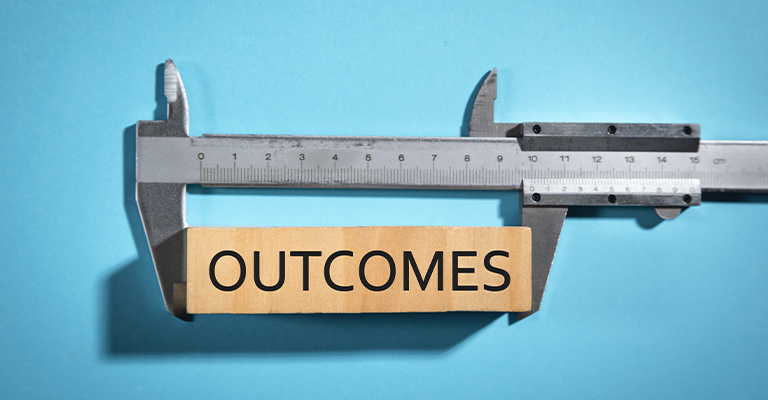How to Measure Team Building Success: A Complete Guide for Leaders
Let’s be honest. You spend real money on team building, so you need to know if it’s working. Too many leaders spend thousands on activities, but can’t prove they are effective. Without good measurement, you’re just throwing money at the problem and hoping for the best.
Here’s the thing, though, effective measurement isn’t just asking people shallow questions, such as “Did you have fun?” You need to track data-driven changes in how your teams work together. The correct data helps you spot problems early and shows your boss exactly why team building matters.
This guide will teach you how to measure your team building results like a pro. You’ll learn what numbers matter, which tools make your life easier, and how to prove your programs deliver real value. Plus, these methods turn those warm, fuzzy feelings into cold, hard facts that executives love.
Key Performance Indicators for Team Building

So, you want to measure whether your team building efforts work? If so, you need to identify the most important metrics to watch without getting overwhelmed by too much data. This means you need to focus on what matters to your bottom line.
Essential Metrics Every Leader Should Track
Start with these three main numbers that show genuine business impact. First, track how many people quit their jobs before and after team building. Good teams have a low churn rate and keep people longer because workers feel connected and valued.
For example, if your department loses 20% of workers each year, a good team building program might drop that to 12%. This 8% decrease can save you thousands in hiring and training costs. You’ll also want to track people who quit on their own versus those who get fired to see the real picture.
Next, measure the quantity and quality of the work your team completes over a given period. Count completed projects, missed deadlines, and apply a quality scoring system of your choosing. Strong teams finish more work faster with fewer mistakes. They also meet deadlines more often because team members help each other succeed.
Finally, watch how often different departments work together. Keep track of joint projects, shared meetings, and cross-team communications. Real teamwork shows up when marketing helps sales, or IT supports customer service without being asked. These connections and collaborations create better products and happier customers.
Additional Indicators of Team Building Success
Here’s where it gets interesting. Look at who’s getting promoted within teams that did your activities. Strong teams are like leadership factories – they naturally develop people because everyone shares knowledge and helps each other grow.
You should also count the number of innovative ideas that teams develop. When people trust each other, they stop hoarding their brilliant thoughts. You might see twice as many valuable suggestions from teams that work well together.
Don’t forget the simple stuff either. Are people calling in sick less? Showing up to optional company events? These minute details speak volumes about whether your team building is working.
Pre and Post Assessment Methods

Here’s the deal — if you don’t check how things are before you start, you can’t prove your team building worked. It’s like trying to show you lost weight without stepping on the scale first. You need that starting number to prove anything changed.
Establishing Your Baseline Measurements
Ensure you start with surveys about trust, communication, and teamwork before you begin any team building activities. Keep it simple with 1-10 scales so you can easily compare results later. Ask direct questions like “How often do your teammates help you hit deadlines?”
Write down your current performance numbers too. If your sales team closes 15% of leads with 3.5-star customer reviews, document those exact numbers. You’ll thank yourself later when you can show real improvement.
Also, schedule some casual observation time during regular meetings. Just watch how people interact without making it weird. You’ll learn more about real team dynamics than any survey can tell you.
Measuring Results After Team Building Activities
Grab feedback within a couple of days of your team building event while people still remember it. But here’s the catch – don’t rely only on that immediate excitement because it fades faster than a sugar rush.
Set up check-ins at 30, 60, and 90 days to see what actually sticks. Use those same starting questions to keep things fair. You want to see if people are still using what they learned or if they’ve gone back to their old ways.
Monthly quick surveys work great too. Keep them short – maybe 3-5 questions about recent teamwork. Something like “How many times did teammates help you this month?” gets you real data without burning people out.
Employee Engagement Metrics

Engaged employees are like team building gold. They work harder, stick around longer, and actually care about results. So tracking engagement changes tells you if your programs are creating real value.
Tracking Engagement Through Data and Numbers
Pay attention to who responds to your company surveys. Strong teams usually have 20-30% higher response rates because engaged people want to share their thoughts. They also write longer, more detailed answers.
You’ll also want to track who shows up to optional stuff like lunch-and-learns or company social events. Teams that genuinely like each other will hang out together outside of required meetings. It’s a reliable sign of good relationships.
Count internal conversations too, but focus on quality over quantity. Look for more work discussions, idea sharing, and people working together to solve problems. That’s the good stuff right there.
Watching How People Act and Think Differently
Look for people who choose to work together when they could work alone. Strong teams will team up on projects even when one person could handle it by themselves. When people want to collaborate, that’s a great sign your team building worked.
Notice if experienced workers start teaching newer employees without being asked. When team relationships are strong, people naturally want to help each other learn and grow professionally.
Listen to how people give feedback in meetings. Teams that work well together offer specific, helpful ideas instead of just complaining. They focus on fixing problems and actually volunteer to help make things better.
Productivity and Performance Tracking

This is where team building proves it’s worth your money. If your teams aren’t getting more work done or doing better work, then what’s the point? Tracking productivity gives you solid proof that your investment pays off.
Measuring Team Output and Quality Improvements
Track how often projects finish on time and within budget. Strong teams work together better and help each other get past problems. It’s like having a built-in support system for every project.
Watch your mistake rates and customer complaints too. Good teamwork usually cuts errors because people check each other’s work and share what they know. You might see mistake rates drop just from better communication.
Time how long routine tasks and big projects take to finish. Efficient teams figure out better ways to work and stop doing the same thing twice. They solve problems faster by combining different skills.
Evaluating Reliability and Consistency in Performance
Look at how steady your team performance stays over time. Strong teams don’t have wild ups and downs – they keep delivering good results even when things get busy or problems pop up.
Watch how teams bounce back from setbacks like missed deadlines or when people leave. Tough teams adapt quickly and keep getting work done despite obstacles. They naturally cover for each other.
Count how often team members jump in to help struggling coworkers. After good team building, you’ll see more people offering extra help or sharing special skills. These helpful behaviors become normal in strong teams.
Communication and Collaboration Indicators

Effective communication is the foundation of a successful team. When people talk efficiently and collaborate more, everything else falls into place. So, checking how communication improves shows whether your team building creates positive changes that last.
Checking Meeting Success and Information Flow
Track who shows up to meetings and how much everyone talks during team gatherings. Strong teams have better attendance and more balanced discussions where everyone actually shares ideas instead of just sitting there.
Count how many follow-up meetings you need to make decisions or solve problems. Teams that communicate well often cut meeting time by 20-30% because they talk clearly and stay focused on solutions.
Look for more information sharing between team members and departments. Strong teams naturally teach each other skills and write down processes without being forced to. Knowledge flows freely instead of getting stuck with one person.
Finding Teams That Work Well Together Across Departments
Count projects where different departments team up. Real company-wide teamwork happens when marketing and sales join forces, or when IT and operations work together on something that helps the business grow.
Watch for times when teams help others without anyone asking them to. Maybe the accounting team starts helping marketing understand spending limits, or customer service shares helpful feedback with the people who develop products. When teams choose to help each other, that’s a clear sign of real teamwork.
Notice when people teach each other skills and offer support. Strong teams learn about different areas of the business and share new knowledge because they genuinely want to help, not because their manager told them they had to.
Long-term Impact Measurement

The best team building benefits take time to show up. However, many companies only check short-term results and miss the most important changes that happen later. Think of it like planting a tree – you won’t see the real growth for months or years, but that’s when it matters most.
Tracking Lasting Behavioral and Cultural Shifts
Check if good behaviors stick around 6-12 months after your team building activities end. Look for people who keep using communication skills and teamwork methods they learned during programs. When changes last this long, it means you built real habits instead of just creating temporary excitement.
Track bigger culture changes like trust levels, how safe people feel speaking up, and how often they share new ideas. These changes often take months or years to fully develop but create the most valuable long-term benefits. Survey your employees about feeling safe to share ideas, admit mistakes, and take smart risks.
Watch for new leadership behaviors within teams and promotions to leadership positions. Strong teams often develop multiple leaders rather than depending on one person to make all decisions. Count how many team members step up and successfully guide projects or help train others.
Keep an eye on how long employees stay and internal movement patterns over extended periods. Teams with strong relationships often retain their top employees longer and provide more career growth opportunities. Track both people who quit on their own and internal promotion rates to measure long-term team health.
Measuring Business-Wide Impact and ROI
Figure out how much money you get back from your team building spending by tracking money earned per employee, profit margins, and cost savings. While many things affect these numbers, strong teams often help improve financial performance through better work efficiency and quality.
Watch customer satisfaction scores, how many customers stick around, and service quality over time. When internal teams work better together, it usually leads to better relationships with customers because coordinated teams provide more consistent, higher-quality experiences. Track both customer feedback scores and how often customers come back.
Check how fast your organization responds to market changes or business problems. Strong teams usually respond faster to new opportunities and handle unexpected problems better. Write down how quickly teams put new processes in place or adjust when priorities change.
Count innovation things like new product ideas, better work processes, and successful change projects. Teams with good relationships often create more creative solutions because people feel comfortable sharing different ideas and building on what others suggest.
Tools and Technologies for Assessment

Modern measurement needs good tools that capture both numbers and stories. However, choosing the right technology depends on your company size and how tech-savvy your team is.
Software Solutions for Automated Measurement
Popular platforms like Culture Amp, Glint, and TINYpulse provide complete engagement measurement with built-in analytics and reporting features. These tools offer comparison data from other companies and can predict team performance trends based on survey responses.
Microsoft Workplace Analytics and similar tools track communication patterns, meeting effectiveness, and team interaction networks automatically. They reveal hidden team dynamics and show you which groups work well together versus those that stay isolated.
Performance management systems combine individual and team metrics with goal tracking and continuous feedback. These integrated platforms let you monitor productivity changes in real-time without requiring separate data collection efforts.
Survey platforms with mobile apps make it easier to collect regular feedback from your team members. Modern tools send automatic reminders, provide multiple response options, and generate instant reports for managers. They also protect employee privacy while providing useful overall data.
Traditional Assessment Techniques and Observation Methods
Create simple observation checklists for watching team interactions during meetings and work sessions. These forms help different managers collect similar data so you can compare results across teams and time periods. Train observers to notice specific behaviors rather than general impressions.
Develop structured interview guides for gathering detailed stories from team members and other stakeholders. Face-to-face conversations often reveal important information that surveys miss. Train interviewers to ask follow-up questions and capture specific examples of behavior changes.
Use focus groups to gather discussions about team building experiences and their impact on daily work. Groups of 6-8 people often generate rich conversations about what worked well and what could improve. Record sessions and analyze themes across different groups.
Set up peer evaluation systems where team members provide confidential feedback about each other’s collaboration and communication skills. These 360-degree assessments reveal team dynamics from multiple perspectives and help you identify both strengths and improvement opportunities.
Creating Your Measurement Framework
Building a complete measurement strategy needs careful planning and buy-in from key people. However, your framework should balance thoroughness with practical limits on your time and resources.
Building Your Custom Measurement System
Start by clearly defining what you want team building to accomplish in your organization. Connect these goals directly to business objectives like reducing turnover, improving customer satisfaction, or increasing productivity. Specific goals make it easier to choose relevant metrics and prove success.
Select 5-7 main measurements that directly relate to your goals without overwhelming your system with too many data points. Focus on metrics you can track consistently over time rather than complex measures that require tons of resources. Simple, reliable data beats complicated systems that nobody maintains.
Design simple processes for collecting, analyzing, and reporting your measurement data on regular schedules. Assign clear responsibilities to specific people and create realistic timelines that don’t burden your already busy teams. Automated data collection reduces workload and improves consistency.
Create feedback loops that use measurement results to improve future team building decisions. Share findings with your teams and ask for their input on what the data means and how programs could work better. This involvement increases buy-in and provides valuable insights for program improvements.
Planning for Resources and Stakeholder Buy-In
Budget for measurement tools, staff time, and outside help if your team lacks analytical skills. Include ongoing costs for software subscriptions, data analysis, and regular reporting activities. Realistic budgeting prevents measurement programs from failing due to resource constraints.
Develop clear communication plans for sharing measurement results with leadership, HR, and participating teams. Create simple, visual reports that highlight key findings and business impact. Regular communication keeps stakeholders engaged and supports continued investment in your team building programs.
Train your managers and team leaders to understand and use measurement data effectively. They need skills to interpret results, identify trends, and take appropriate action based on findings. Provide ongoing support and coaching to ensure measurement data actually influences decision-making.
Build flexibility into your measurement framework to accommodate changing business needs and new best practices. Schedule annual reviews of your measurement approach to ensure it remains relevant and useful. Be willing to adjust metrics and methods as you learn what works best for your organization.
Conclusion
Look, measuring team building success isn’t hard, but it does turn unclear spending into solid business results. Good measurement helps you make programs better, prove they’re worth the money, and show real value to the people who control your budget.
Remember that good measurement uses multiple numbers instead of betting everything on one thing. Focus on both quick feedback and long-term changes to see the full impact of your efforts.
Start simple with 3-5 key numbers, then add more as you get comfortable with the process. Get your teams involved in measurement too – they’ll give you better support and more honest insights about what works. When you measure consistently, team building stops being just a “nice-to-have” expense. It becomes an innovative business tool. Your company will benefit from stronger relationships, better performance, and real returns on every dollar you spend on team development.



